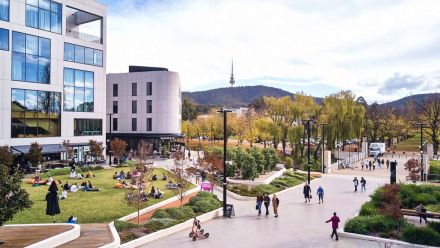Life satisfaction plummets among young Aussies during COVID
Young Australians have suffered the greatest drop in life satisfaction during the first two years of the COVID-19 pandemic, new analysis from The Australian National University (ANU) shows.
The findings come from the COVID-19 Impact Monitoring Survey, which has asked more than 3,500 Australians how the pandemic has affected their lives since COVID-19 was first recorded in the country. The survey is the longest running most comprehensive study of the pandemic's social, health and economic impacts in Australia.
According to the latest wave of the survey, Australians aged 18 to 24 years saw a drop of 0.50 points in life satisfaction from 6.8 in January 2020 to an average of 6.3 on a scale of 0 to 10 between April 2020 and April 2022. Life satisfaction for young adults reached a low of 6 out of 10 in April 2022 and October 2020, and in April 2022 was still well below the January 2020 value.
"Young Australians are still at the highest risk of suffering the worst mental and wellbeing effects of COVID-19," study co-author Professor Nicholas Biddle said.
"Clearly we need to make sure our young people are given the right support and care to help them deal with the ongoing impacts of the pandemic.
"This includes access to ongoing employment and education opportunities, mental health support, and factoring the impact of any COVID-19 policy on youth and young adults into all our policy decisions."
Men and women have experienced similar drops in life satisfaction during the pandemic, while Australians aged 55 and older were less likely to suffer a drop compared to those younger than 55.
"Between April 2020 and April 2022 if anything, life satisfaction was slightly higher for those aged 75 years and over than prior to the pandemic," Professor Biddle said.
"This might be because the health impacts on older Australians were not as large as in some other countries like the UK, the USA or Continental Europe, or as large as they were first predicted."
The latest survey results show overall life satisfaction in Australia sat at 6.9 out of 10 in January 2020. The lowest level of life satisfaction during the pandemic was 6.5 in April 2020 and August 2021, with the average 'lost life satisfaction' over the period equal to 0.21. By April 2022, life satisfaction had returned to 6.7, still well below levels observed in late 2019 and early 2020.
Professor Biddle said the drop in life satisfaction during the COVID-19 pandemic could be measured in "very real economic terms".
"For example January 2020's level of life satisfaction of 6.93 equates to a household income of $1,480 per week," Professor Biddle said.
"In contrast, a life satisfaction of 6.71 equals a weekly household income of $773. The average lost life satisfaction during the pandemic is therefore equivalent to roughly a halving in household's weekly income.
"Clearly, there has been a very significant impact on life satisfaction for all Australians due to COVID-19."
The survey also examined Australians' mental health and psychological distress; loneliness and self-isolation; social cohesion; and economic and financial stress, including hours worked, during the COVID-19 pandemic.
Key findings include:
· There was a large increase in psychological distress between the beginning of the pandemic and April 2020.
· Levels of psychological distress have stabilised, and even declined, since January 2022 but remain much higher than levels before the COVID-19 pandemic.
· Two years into the pandemic levels of face-to-face social interaction had not returned to pre-pandemic levels.
· The proportion of adults who met socially with other people less often than once a week was 54.8 per cent in April 2022, much higher than the 41.4 per cent who said they did the same in February 2020.
· There was a significant increase in social cohesion during the early stages of the pandemic with it increasing over the period February 2020 to October 2020. Since then social cohesion has started to decline, but has remained well above pre-COVID levels.
· Averaged across the entire pandemic period, 58 per cent of adult Australians are estimated to have worked fewer hours than they did in February 2020.
· The average 'lost hours' was 1.64 hours per week, or 174 hours over the 106 weeks between April 2020 and April 2022.
· The industries in which workers lost the greatest number of hours over the pandemic period were Wholesale Trade; Accommodation and Food Services; Transport Postal and Warehousing; Information Media and Telecommunication; Education and Training; Arts and Recreation Services; and Other Services.
· Despite there being large gender differences in the distribution of workers across industries, women still lost a significantly and substantially greater number of hours compared to men, over the pandemic period. Younger workers also lost more hours, as did those aged 55 to 64 years.
· There was a large drop in income between February and April 2020, from $1,761 per week to $1,655 per week, adjusting for deflation that occurred over the period but taking into account the increase in some social security benefits, as well as the introduction of JobKeeper.
· Income continued to decline to January 2021, but then increased steadily from January 2021 through to April 2022, with average income at the end of the period $1,712 per week and only slightly below that of the pre-COVID data when adjusting for inflation.
Read the full report online.
Data collection for the survey was conducted by the Social Research Centre on behalf of the ANU Centre for Social Research and Methods. The data is available via the Australian Data Archive. The most recent paper was partly funded by the Australian Institute of Health and Welfare.




